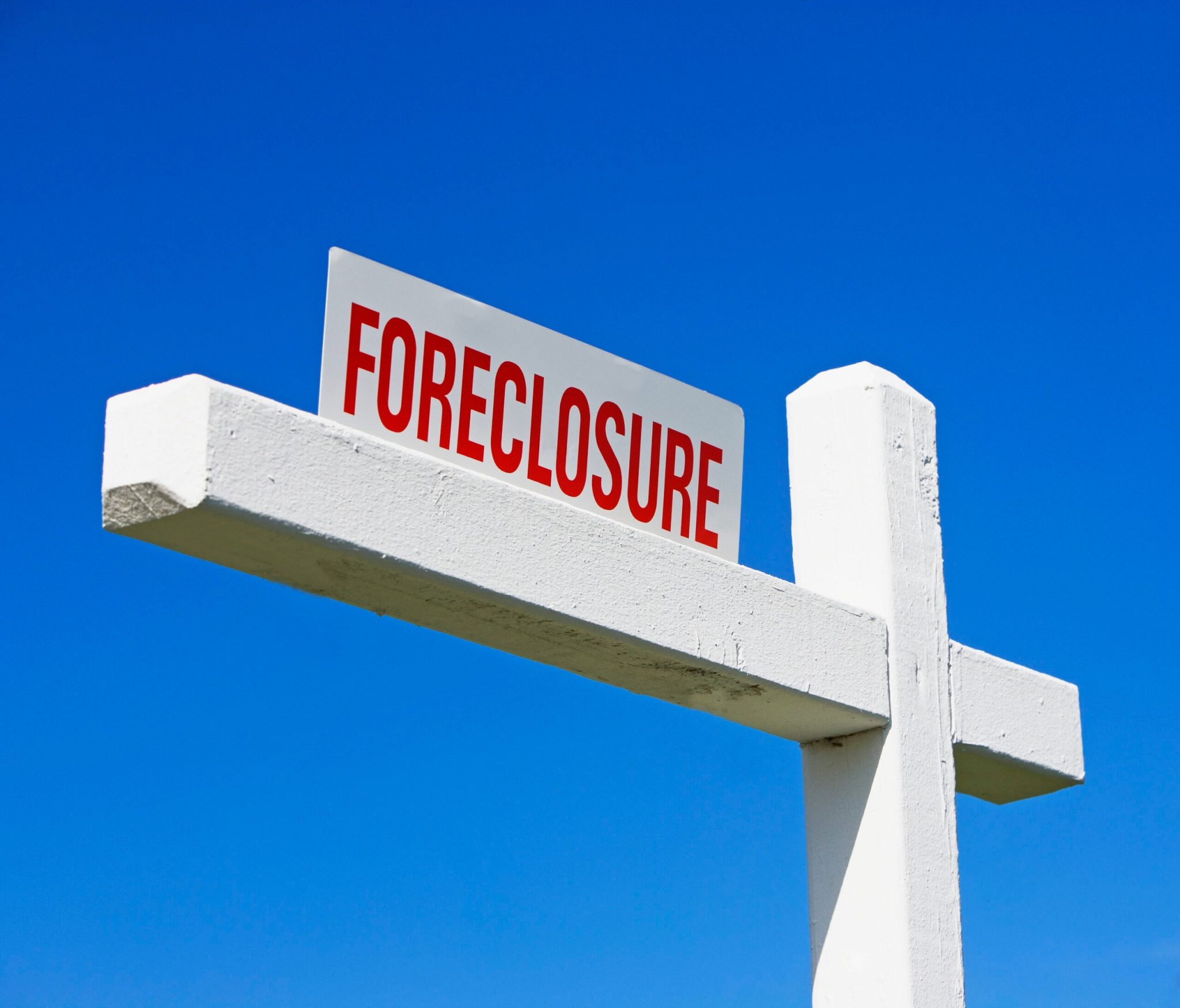If you remember the turmoil of the global financial crisis, hearing that foreclosure activity is up might make your knees weak and palms sweaty. I know I can’t help it.
After reading recent reports of climbing foreclosures, I spoke with experts ranging from real estate data companies to non-profit debt counselors to foreclosure auction sites. Their opinion? The national foreclosure rate is still quite low.
So take a deep breath. This isn’t 2008. The housing market isn’t about to crash. The picture is much more complex than one statistic lets on. Here’s why they aren’t panicking and neither should you.
What is ‘foreclosure activity’?
There’s actually less foreclosure activity now than before COVID-19
Current foreclosure numbers aren’t quite as scary when you give them a little historical context. It’s like turning on the lights in a dark basement. We remain at foreclosure activity levels that are well below the national average prior to the pandemic.
Still, it’s true that national foreclosure activity is up since last year — and historical context is cold comfort for any homeowners facing the possibility of losing their home. According to real estate data company ATTOM, there was a 17 percent year-over-year rise in the third quarter of 2025.
In September 2025 alone one in every 3,997 housing units (or 0.025 percent) were in foreclosure proceedings vs. one in every 4,750 housing units (or .021 percent) last September. That’s an increase of 20 percent from one year to the next.
But compare this to February 2020 — the month before lockdowns started — when one in every 2,841 housing units (or 0.035 percent) were at some point in the foreclosure process. That’s 34 percent more foreclosure activity than what we’re seeing now.
One thing’s for sure: The pandemic left a mark on mortgage servicers that still shows to this day. Notably, the federal government instituted foreclosure moratoriums that halted progress on foreclosures from March 2020 until July 31, 2021.
“When COVID hit and incomes dropped suddenly, mortgage servicers hit pause,” says Andy Manthei, associate business development manager for GreenPath, a debt counseling nonprofit. “That delayed things and opened up options for people who otherwise would have lost income and perhaps their homes.”
Even though the moratoriums ended over four years ago, there could be a lingering effect on the data.
“Foreclosures can take more than a year to work their way through the process so the end of the moratoriums could still be affecting foreclosure rates to a degree,” says Rob Barber, CEO of ATTOM. “But we already saw a rise in foreclosures in the two years after the moratoriums were lifted, and other economic and market factors such as higher interest rates, persistent affordability challenges and household financial strain are now likely contributing to the continued year-over-year increases.”
Timeframe to foreclosure
On average, foreclosures took 608 days in the U.S. in Q3 of 2025, according to ATTOM. However, states can vary significantly in their timeframe depending on their laws, particularly if the foreclosure process requires lengthy court involvement. For instance, in the same time period, the average foreclosure took 154 days in Texas — just shy of 5 months. But in neighboring Louisiana, it was 3,632 days, or nearly 10 years.
It’s unnerving to see foreclosure rates rise, but keep in mind that sometimes a rise is simply a return to normal.
According to Daren Blomquist, vice president of market economics for Auction.com — an auction site for foreclosures and bank-owned properties — current foreclosure activity is more about reaching equilibrium than it is about crisis.
The pandemic years were abnormal — the housing market was artificially stimulated, and foreclosures were artificially suppressed. Now we’re normalizing.
— Daren Blomquist
Vice president of market economics, Auction.com
More reasons not to worry about the current foreclosure activity
There are other reasons foreclosures remain lower than before the pandemic, says Blomquist. These include:
- Loss-mitigation strategies: During COVID-19, mortgage servicers began offering more options for struggling homeowners to avoid foreclosure. “Those lessons stuck and are still being applied,” says Blomquist.
- A rise in home equity: Rising home prices have translated to rising home equity for many homeowners. This means they’re more likely to come out ahead if they sell, which gives them more flexibility.
- Underwriting is stronger: Lenders have been more stringent on who they lend to, which has lowered the risk for foreclosure.
- The job market: “Until recently we’ve had a relatively strong economy and job market,” says Blomquist. “Unemployment is the biggest trigger for foreclosure, and it’s been low.”
Home affordability is also pumping the brakes on foreclosure
Buying a home is more difficult than it’s been in a long time. The typical mortgage payment was just over $2,200 in 2024 — when adjusted for inflation, that’s a full $800 a month more than what it was in 2020, according to Bankrate’s analysis.
Furthermore, income has not kept up with rising home prices. In 2024, the national median single-family home price was five times higher than the median household income, according to the Joint Center for Housing Studies of Harvard University. That’s compared to the price-to-income ratio of 4.1 in 2019, and dwarfs the price-to-income ratio of 3.2 seen in the 1990s.
Income increases aren’t keeping up with climbing home prices
Along with rising prices and interest rates, property taxes and homeowners insurance premiums have gone up, too. Right now, many homeowners have the benefit of equity, making it easier for them to sell if homeownership costs get too high. For buyers, these rising costs mean that the bar to get a mortgage right now is high, and those who are able to clear it are more financially qualified. That could continue to translate to fewer-than-average foreclosures in the future.
But some foreclosure activity actually helps the housing market. Vacant real estate owned (REO) auctions (properties that have been foreclosed and are now owned by the bank) are at a five-year high, says Blomquist. A lot of these properties were abandoned during COVID and are now being bought by investors and brought back to the market.
“Foreclosures are never ‘good,’ but in a healthy market you do need some,” says Blomquist. “I like to think of foreclosures as the wolves of the housing ecosystem — not pleasant, but necessary to keep balance.”
Some metro areas are driving more foreclosure activity than others
The national foreclosure activity data doesn’t tell the whole story. Some metros are being hit harder than others, particularly in regions like the southeast. Out of the top 20 metros for foreclosure activity, 55 percent of them are in the southeast, with 35 percent in Florida alone.
“Many of those markets overheated during the pandemic boom,” says Blomquist. “Prices rose fast as people moved in, and some buyers ended up purchasing at the top. Now, as prices cool, some are underwater.”
There are other issues at play, too.
“In cities like Cleveland and Las Vegas, for example, unemployment rates are above the national average,” Barber syas. “Some of today’s elevated foreclosure levels may reflect a response to wider financial stress in the economy.”
On the other side, many major metros saw significant year-over-year declines in foreclosure activity. These include:
- Nashville-Davidson-Murfreesboro-Franklin, TN: -42.31 percent
- Buffalo-Cheektowaga-Niagara Falls, NY: -41.67 percent
- Tulsa, OK: -30.71 percent
- Columbus, OH: -28.00 percent
- Minneapolis-St. Paul-Bloomington, MN-WI: -18.14 percent
Another thing to keep in mind is that in ATTOM’s list of 225 metros, 180 are experiencing less foreclosure activity than the national average in February 2020. That’s 80 percent of metros now that have less foreclosure activity than in the healthy housing market leading up to the pandemic.
The foreclosure activity leading up the pandemic wasn’t historically elevated, either. So, in reality, most metro areas are still experiencing very few foreclosures.
Still concerned? Here’s what you should look out for
Whether you’re thinking of buying a home or you currently own one, it makes sense to monitor the health of your investment. There are several key factors to keep in mind to maintain a solid financial picture.
- Your debt: Whether you’re buying a home, or you already own one, managing your debt is essential. That means paying all of your bills on time and intentionally paying down higher interest debt.
- Your emergency savings: Owning a home costs more than your mortgage. It’s not unusual to have to fork over money for repairs and maintenance. It’s crucial to have emergency savings.
- Your income: Steady income will help you anticipate and pay your bills. Secure employment and mobility in your field will help you buy a home and stay in it.
- The macro economy: Weakening in the job market, both in terms of unemployment and job creation, is an early warning sign that conditions could be worsening, says Blomquist. Similarly, rapidly dropping mortgage rates — while a boon for potential buyers — are a sign of a major economic issue.
- Your local real estate market: “If homes start sitting longer and listings jump, that market’s softening,” says Blomquist. That could spell an opportunity if you’re buying, but isn’t good news if you’re trying to sell.
While economic concern is understandable, let’s temper it. It’s likely the housing market is still rebounding from the effects of COVID, in more ways than one. We’re still coming out of the effects of the foreclosure moratoriums. And now we’re in an environment where most homebuyers have to be more financially well-off to qualify for a mortgage. Even if foreclosure activity slowly rises in the coming years, we still have a lot of headroom before things turn toxic.
“We’re still below 2019 [foreclosure] levels, which were healthy,” says Blomquist. “So while foreclosures are rising, I see it as returning to balance, not entering another crisis.”
Why we ask for feedback
Your feedback helps us improve our content and services. It takes less than a minute to
complete.
Your responses are anonymous and will only be used for improving our website.
Help us improve our content
Read the full article here
















